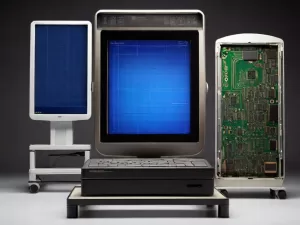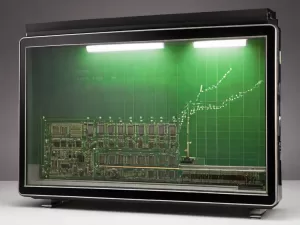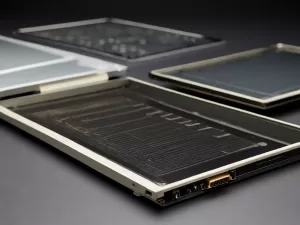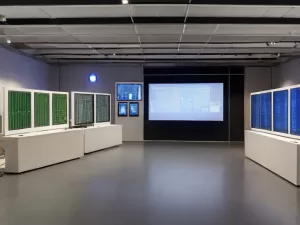The Evolution of SMD Screen Technology: Past, Present, and Future
As technology continues to advance and redefine our daily lives, the evolution of SMD (Surface-Mount Device) screen technology stands at the forefront, revolutionizing the way we perceive and interact with visual information. From its humble beginnings to the cutting-edge breakthroughs of today, SMD screen technology has come a long way, transforming our televisions, computer monitors, smartphones, and an array of other electronic devices.
In this article, we delve into the captivating journey of SMD screen technology, exploring its past accomplishments, examining its current state, and speculating on the fascinating possibilities it holds for the future. Join us as we embark on an informative journey through time, uncovering the pivotal advancements that have continually pushed SMD screens towards unprecedented levels of brilliance and user experience, while envisioning the exciting prospects that lie ahead.
Table of Contents
- Introduction: The Rise and Advancements of SMD Screen Technology
- From Bulky CRTs to Compact SMDs: Revolutionary Enhancements in Screen Technology
- Unveiling the Present: Cutting-Edge Applications and Benefits of SMD Screens
- Future Innovations: A Glimpse into the Next Generation of SMD Screen Technology
- Q&A
- The Conclusion

Introduction: The Rise and Advancements of SMD Screen Technology
SMD (Surface Mount Device) screen technology has revolutionized the visual display industry with its compact size, high resolution, and vibrant color reproduction. Over the years, this technology has seen remarkable advancements, ushering in a new era of immersive and captivating visual experiences.
In the past, large and bulky screens dominated the market, limiting the possibilities for creative and flexible display installations. However, with the rise of SMD screen technology, the industry witnessed a significant shift towards sleeker and more lightweight screens. This breakthrough allowed for the development of ultra-thin and flexible displays, enabling dynamic and seamless integration into various spaces and applications.
Presently, SMD screens have become the preferred choice for advertising, entertainment, and even architectural purposes. Their ability to deliver stunning visuals, even from a wide viewing angle, has made them an indispensable tool for businesses in capturing the attention and engagement of their target audience. With advancements in LED technology, SMD screens now boast higher pixel densities and improved color accuracy, resulting in sharper images and more lifelike visuals.
Looking towards the future, the evolution of SMD screen technology shows no signs of slowing down. Researchers and manufacturers are constantly pushing the boundaries to develop screens with even higher resolutions, wider color gamuts, and enhanced durability. Moreover, the integration of innovative features like curved and transparent displays is set to further revolutionize the visual landscape.
In conclusion, the rise and advancements of SMD screen technology have revolutionized the visual display industry, offering unparalleled visual experiences in a compact and flexible form factor. As technology continues to progress, we can expect even more exciting developments in the world of SMD screens, further expanding the possibilities for captivating and immersive visual storytelling.

From Bulky CRTs to Compact SMDs: Revolutionary Enhancements in Screen Technology
The emergence of Surface Mount Device (SMD) screen technology has transformed the world of displays, revolutionizing the way we view and interact with digital content. The SMD screens have come a long way from the bulky and energy-consuming CRT monitors of the past, offering sleek and compact designs that deliver superior image quality and energy efficiency.
In the past, CRTs required large and heavy casing to house the cathode ray tube, resulting in large and bulky screens that occupied significant desk space. SMD screens, on the other hand, utilize a different technology that enables the integration of the screen components into compact, thin panels. This advancement allows for more flexibility in design and results in slimmer and lighter displays.
Furthermore, SMD screens offer impressive enhancements in image quality. With advancements in LED backlighting technology, SMD screens are capable of producing vibrant colors, deeper contrast ratios, and wider viewing angles. This ensures a captivating visual experience, whether you’re watching multimedia content or working on graphic-intensive tasks.
Energy efficiency is another key advantage of SMD screens. Unlike CRTs that consume a significant amount of power, SMD screens are designed to be energy-efficient, reducing electricity consumption and lowering the environmental impact. This attribute is not only beneficial for users who can enjoy cost savings in the long run but also aligns with the increasing demand for green and sustainable technology.
In the coming years, the future of SMD screen technology looks promising. Manufacturers continue to push the boundaries of innovation, aiming to further enhance display quality, increase pixel densities, and improve the overall user experience. As the demand for seamless integration of screens in various devices grows, including smartphones, tablets, and wearable tech, SMD screens are expected to play a pivotal role in shaping the future of digital displays.

Unveiling the Present: Cutting-Edge Applications and Benefits of SMD Screens
SMD screens, short for Surface Mount Device screens, have revolutionized the world of display technology. They have evolved considerably over the years, creating immersive visual experiences and empowering a wide range of industries. In this post, we will explore the cutting-edge applications and benefits of SMD screens, delving into their present capabilities and the potential they hold for the future.
One of the remarkable benefits of SMD screens is their high-resolution display, which makes visuals incredibly crisp and vibrant. Whether it’s for digital signage, broadcasting, or virtual reality, SMD screens offer exceptional image quality, allowing viewers to experience content with stunning clarity. The fine pixel pitch of these screens brings visuals to life and ensures that even the smallest details are vividly portrayed.
The versatility of SMD screens is another key advantage. These screens come in various sizes and form factors, from large outdoor billboards to compact curved screens for indoor applications. This flexibility allows SMD screens to fit seamlessly into different sectors, such as retail, entertainment, education, and healthcare. Moreover, their slim and lightweight design facilitates ease of installation, making them adaptable for different environments and installations. Whether you need a video wall to engage customers or a dynamic information display at a trade show, SMD screens can be customized and deployed to meet specific requirements.
Furthermore, SMD screens are known for their energy efficiency. With the use of advanced technologies, such as LED backlighting and power-saving modes, these screens consume significantly less power compared to traditional display options. This not only reduces operational costs but also contributes to sustainability efforts by minimizing energy consumption. Additionally, the long lifespan of SMD screens ensures durability and longevity, resulting in fewer replacements and less electronic waste.
In conclusion, SMD screens have witnessed remarkable advancements, propelling them to the forefront of display technology. Their high-resolution displays, versatility, energy efficiency, and longevity make them an ideal choice for a wide range of applications. As technology continues to evolve, SMD screens are poised to continue shaping the future of visual experiences, offering even more immersive and captivating displays.

Future Innovations: A Glimpse into the Next Generation of SMD Screen Technology
With technology advancing at an unprecedented rate, the future of SMD screen technology holds exciting possibilities. In the coming years, we can expect to see a vast improvement in display quality, flexibility, and functionality. One of the key advancements will be the development of 8K resolution screens, providing an unparalleled level of detail and clarity.
Another exciting area of innovation is the introduction of foldable screens. These screens will revolutionize the way we interact with our devices, allowing for compact storage and increased portability. Imagine a smartphone that folds open into a tablet-sized screen, providing a seamless transition between different modes. Additionally, these screens will allow for new form factors, such as roll-up displays that can be easily stored and transported.
Furthermore, future SMD screens will incorporate advanced touch and gesture recognition technology, enhancing user experience and enabling new ways of interaction. With the integration of haptic feedback, users will be able to feel textures and tactile sensations on the screen, opening up new possibilities for gaming and virtual reality applications.
As we look to the future of SMD screen technology, it is clear that the possibilities are limitless. From higher resolution and flexible displays to innovative modes of interaction, these advancements will change the way we perceive and use screens in our daily lives. Stay tuned for the next generation of SMD screens that will undoubtedly shape the future of technology.
Q&A
Q: What is SMD screen technology?
A: SMD (Surface-Mounted Device) screen technology refers to the manufacturing process of mounting electronic components directly onto the surface of circuit boards. In the context of screens, SMD technology involves the use of tiny light-emitting diodes (LEDs) or other electronic devices directly mounted onto a display panel.
Q: How has SMD screen technology evolved over time?
A: Over the years, SMD screen technology has undergone significant advancements. In the past, SMD screens were larger, bulkier, and had limited resolution capabilities. However, with advancements in manufacturing processes and electronic components, SMD screens have become much smaller, thinner, and capable of rendering high-resolution images and videos.
Q: What are the main advantages of SMD screen technology?
A: SMD screen technology offers several advantages over traditional display technologies. Firstly, SMD screens are thinner and lighter, making them ideal for use in portable devices such as smartphones, tablets, and laptops. Additionally, SMD screens provide better color accuracy, contrast ratios, and viewing angles, resulting in a more immersive visual experience. Moreover, they are energy-efficient, have higher refresh rates, and can be flexible or curved to fit various applications.
Q: What are some notable applications of SMD screen technology?
A: SMD screen technology finds applications in various industries and products. It is commonly used in consumer electronics like smartphones, televisions, and computer monitors. Additionally, SMD screens play a crucial role in industries such as advertising, digital signage, automotive displays, virtual reality (VR) headsets, and outdoor displays, where high resolution, clarity, and durability are required.
Q: What can we expect from the future of SMD screen technology?
A: The future of SMD screen technology looks promising. With ongoing research and development, we can anticipate even thinner screens with higher pixel densities, enabling incredibly sharp images. There is also a growing interest in the development of flexible and transparent SMD screens, opening up possibilities for innovative applications such as foldable smartphones, wearable devices, and augmented reality (AR) glasses. Furthermore, advancements in energy efficiency and sustainability will likely be a major focus in the coming years.
Q: Are there any challenges or limitations associated with SMD screen technology?
A: While SMD screen technology has progressed rapidly, it still faces some challenges. The production cost of high-resolution SMD screens can be relatively high, which affects their affordability for certain applications. Additionally, as screens become thinner and more delicate, durability and robustness may be a concern. However, these challenges are being actively addressed by manufacturers and researchers in the field.
Q: How does SMD screen technology compare with other display technologies like OLED or LCD?
A: SMD screen technology, specifically in the form of LED displays, offers distinct advantages over other technologies. Unlike LCD, SMD screens do not require a backlight, resulting in deeper blacks, better contrast, and lower power consumption. Compared to OLED, SMD screens generally have a longer lifespan, lower manufacturing cost, and are less prone to burn-in. However, OLED screens have the advantage of individually lit pixels, resulting in the potential for true blacks and infinite contrast ratios.
Q: In summary, what impact has SMD screen technology made in the display industry?
A: SMD screen technology has revolutionized the display industry by enabling thinner, lighter, and higher resolution screens. Its widespread adoption has enhanced the visual experience across multiple devices and industries. With continuous advancements, the future of SMD screens looks promising, with even greater levels of picture quality, energy efficiency, and innovative applications on the horizon.
The Conclusion
In conclusion, the evolution of SMD screen technology over the years has been truly remarkable. From the humble beginnings of early monochrome displays to the vibrant and lifelike images we now experience, SMD screens have revolutionized the way we interact with visual content.
Through advancements in manufacturing techniques, the present generation of SMD screens offers unparalleled resolution, color reproduction, and brightness levels, providing users with an immersive visual experience that was once unimaginable. These screens have found their way into various industries, from entertainment and gaming to advertising and information displays, transforming the way we consume and engage with visual content.
Looking towards the future, the potential for SMD screen technology seems boundless. As researchers explore new materials and design concepts, we can anticipate even thinner, lightweight, and flexible screens. This may pave the way for innovative applications in areas like wearable technology and curved displays.
Furthermore, the incorporation of emerging technologies such as quantum dot and micro LED could further enhance the performance and visual quality of SMD screens. With the promises of deeper blacks, wider color gamuts, and improved energy efficiency, these advancements could redefine the standard for visual displays.
Undoubtedly, the SMD screen technology has come a long way, surpassing expectations at each step of its evolution. It is an integral part of our daily lives, enabling us to connect, communicate, and be entertained in ways we have never imagined before. With continuous innovation and research, we can eagerly anticipate the future advancements that will further shape the landscape of SMD screen technology.
Looking for premium SMD screens and professional display solutions? SMDLED.PK is your trusted partner for state-of-the-art SMD technology. Explore our top-quality products like the stunning Leyard HDR 4K SMD Video Wall for crystal-clear visuals, the versatile MSA Plus SMD LED Screen Module, the sleek MSA Ultra Thin SMD LED Screen Module for modern setups, the durable MSG Outdoor SMD LED Screen Module, and the efficient MSG Indoor SMD LED Screen Module perfect for indoor environments.
We also offer exceptional Outdoor SMD Screens, Indoor SMD Screens, Flexible SMD Screens for creative designs, Cabinet SMD Screens for secure setups, Signpole SMD Screens for advertising, and stunning SMD Video Walls for large-scale visual impact. With SMDLED.PK, experience reliability, superior technology, and tailored solutions for all your display needs. Visit us today and transform your spaces with unparalleled visual excellence!
Evolution of SMD Screen
Contact Us For Free Consultation at 0306-1333384
Powered By BIACommunication


